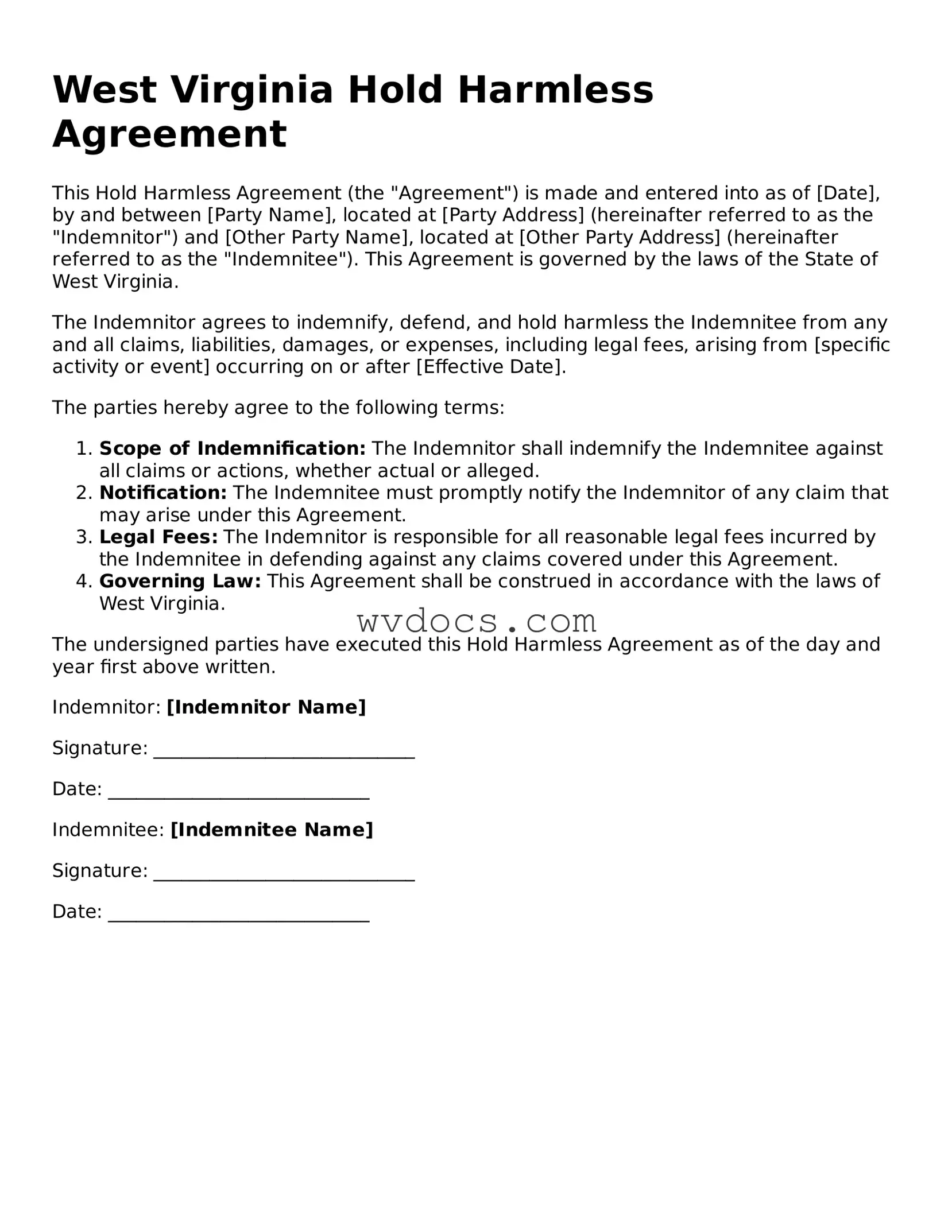What is the West Virginia Hold Harmless Agreement form?
The West Virginia Hold Harmless Agreement form is a legal document that protects one party from liability for any damages or injuries that may occur during a specified activity or event. It is commonly used in various situations, including property rentals, events, and recreational activities, to ensure that one party does not hold the other responsible for unforeseen incidents.
Who should use the Hold Harmless Agreement?
This agreement is typically utilized by individuals or organizations hosting events or providing services where there is a risk of injury or damage. For example, property owners, event organizers, and service providers may all benefit from using this form to limit their liability and protect their interests.
What are the key components of the agreement?
The key components of the West Virginia Hold Harmless Agreement include the names of the parties involved, a clear description of the activity or event, the scope of the indemnification, and any specific terms or conditions that apply. It is crucial to ensure that all details are accurate and clearly stated to avoid any misunderstandings.
Is the Hold Harmless Agreement legally binding?
Yes, when properly executed, the Hold Harmless Agreement is legally binding in West Virginia. Both parties must sign the document, indicating their understanding and acceptance of the terms. However, it is advisable to consult with a legal professional to ensure that the agreement complies with state laws and adequately protects your interests.
Can the agreement be modified after it is signed?
Modifications to the Hold Harmless Agreement can be made, but both parties must agree to any changes. It is essential to document any amendments in writing and have both parties sign the revised agreement to maintain its validity and enforceability.
What happens if someone is injured despite the agreement?
While the Hold Harmless Agreement aims to limit liability, it may not completely shield a party from legal action in all circumstances. If an injury occurs, the specifics of the situation, including negligence or willful misconduct, will be examined. Legal counsel can provide guidance on how the agreement may be interpreted in such cases.
How can I ensure the agreement is enforceable?
To enhance the enforceability of the Hold Harmless Agreement, ensure that it is clear, comprehensive, and signed by all parties involved. It is also beneficial to have the document reviewed by a legal professional. This review can help identify any potential issues and ensure that the agreement meets all necessary legal requirements.
Where can I obtain the West Virginia Hold Harmless Agreement form?
The West Virginia Hold Harmless Agreement form can often be obtained from legal websites, local government offices, or legal professionals. It is important to use a reputable source to ensure that the form complies with current laws and regulations in West Virginia.
